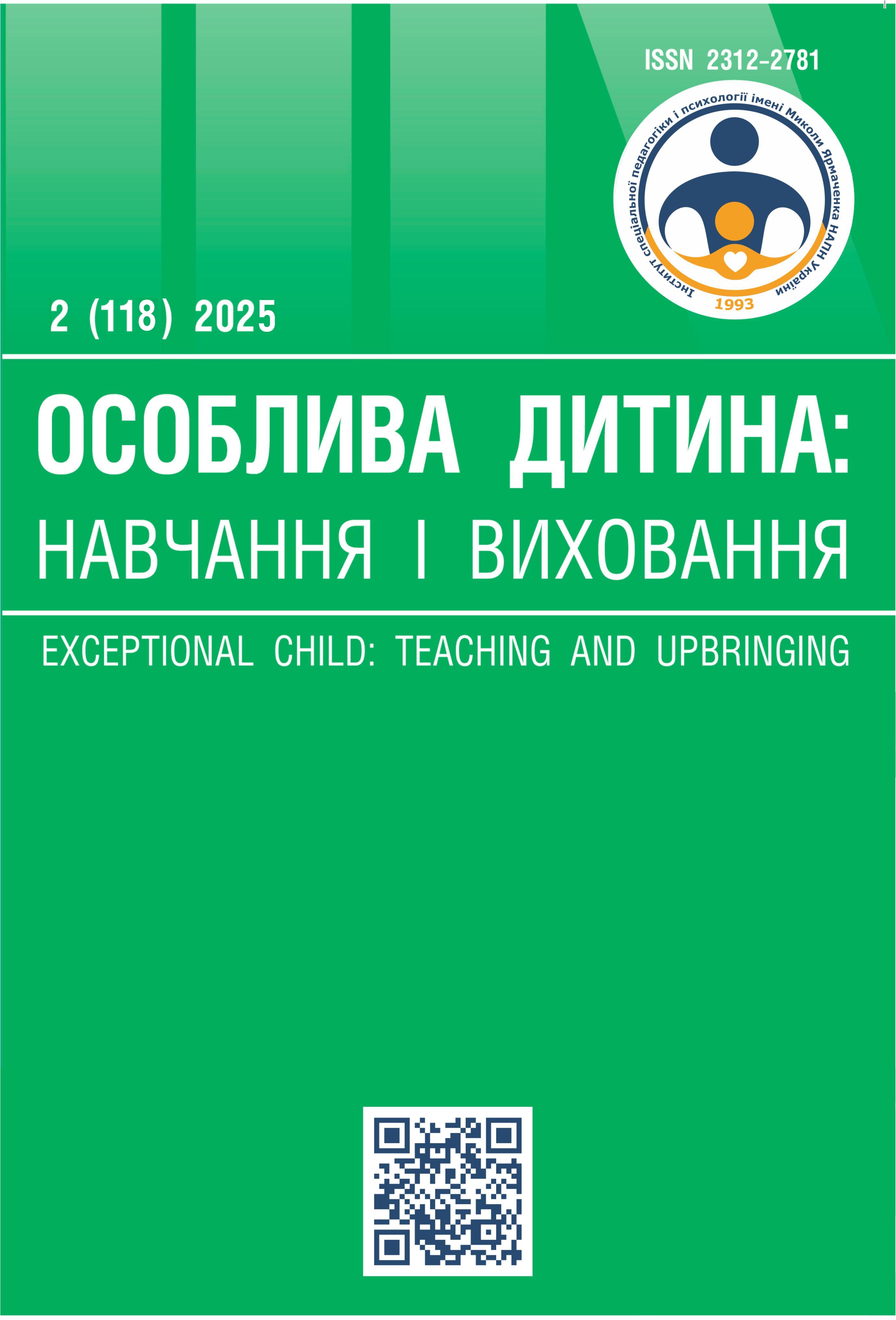MEASURING BASIC EMOTIONAL REACTIONS DURING WAR: STEPS OF AN EMPIRICAL STUDY
Abstract
The most vulnerable population worldwide is children, especially when there is a real threat of air raids and dangers during war. Among the basic emotional reactions to such distressing events in contemporary Ukraine, anxiety and fear are characterized by their protective nature and distinctive features.
The study of the specifics of anxiety and fears in children with special educational needs is conducted considering theories of wartime social psychology, balance of power, stress psychology, war trauma, and realism, encompassing their impact on personality development, frustration situations, and behavior motivation through the lens of the concept of environmental emotional well-being. Under such circumstances, anxiety is defined as a tendency to experience emotional distress in situations of uncertain threat. Fear is understood as an intense negative emotion associated with danger (whether real or imagined). In the vulnerable cohort of children with special needs, these states are acquired and have their own particularity and features (categorical, age-related, gender-specific, etc.). It is critical to prevent these states from developing pathological signs under wartime conditions, especially in children with special needs. The objective of the study is to outline the initial stages of a fact-finding study (preparatory and exploratory phases) with a focus on specific methods for examining anxiety and fears in children with special needs.
The process of the fact-finding phase of the study includes organizational, empirical, and data processing methods, as well as interpretative methods for identifying structural elements of diagnostic methodologies. Conclusions. An example of a diagnostic methodology for children aged 3-5 years (Ukrainian version) based on the mentors questionnaire aligned with the main characteristics of SCAS (Susan H. Spence, 1998) is presented, revealing symptoms of anxiety. The diagnostic criteria for anxiety and fears are outlined based on physiological, emotional-behavioral, and cognitive reactions. A Generalized Map of Fears of Children with Special Needs During the War; was compiled, considering the type of fear (physical, social, existential), the level of its manifestation (intensity, frequency), and social background (family status, experience of displacement, availability of support), etc. It is stated that timely diagnosis, support of a safe environment and family involvement require timely psychodiagnosis by specialists, adaptive interventions, psychoeducation, which are critical factors in reducing childrens psycho-emotional functioning and meeting their safety needs.
References
Особлива дитина: навчання і виховання. №2(118). 2025. с.193-213


